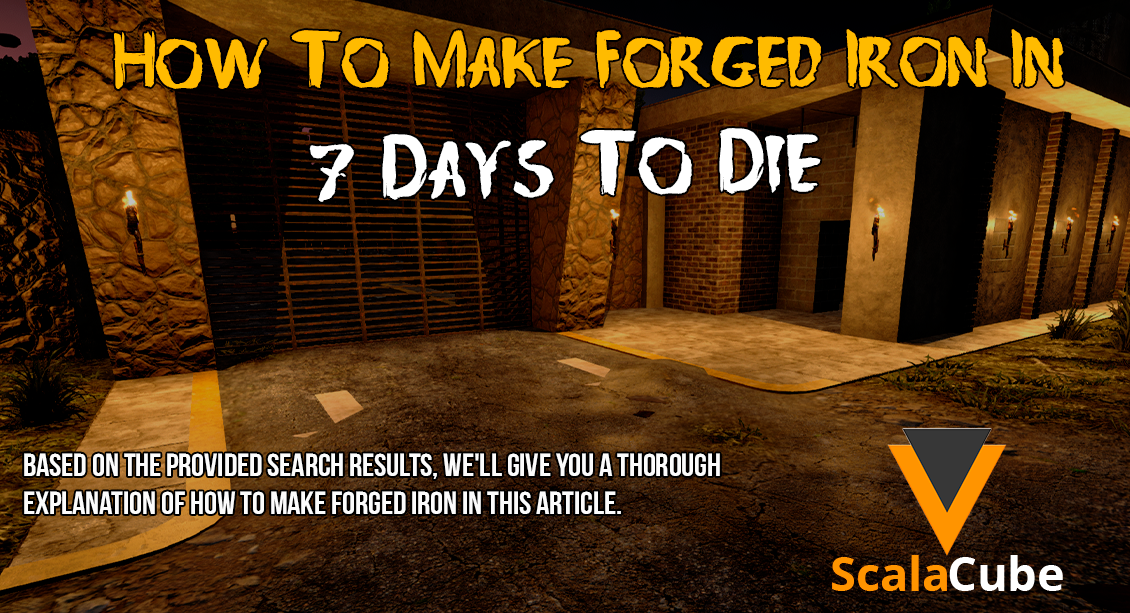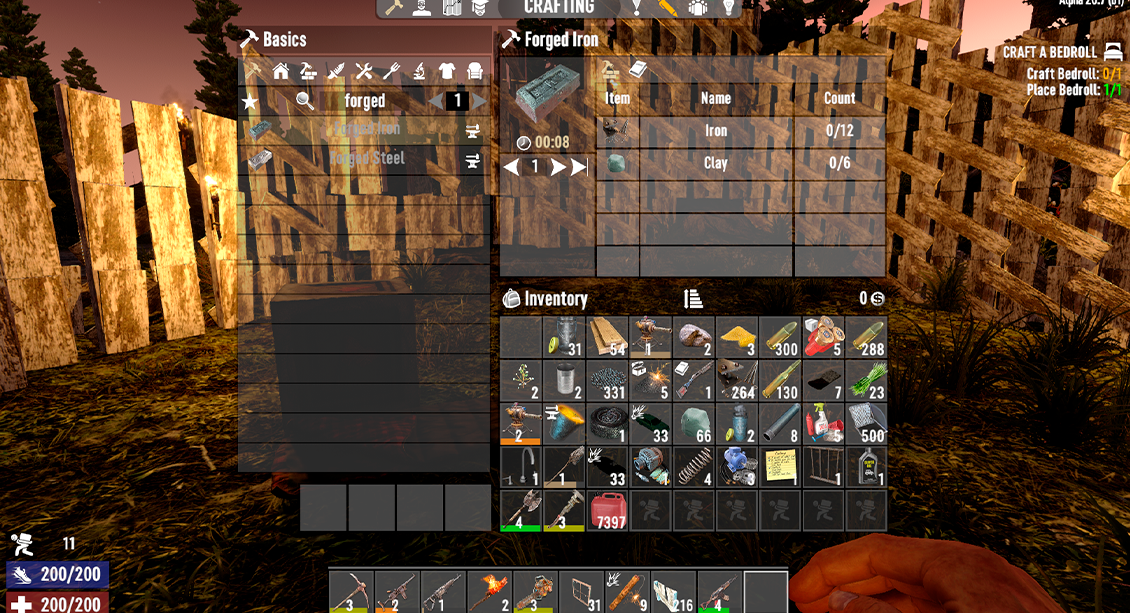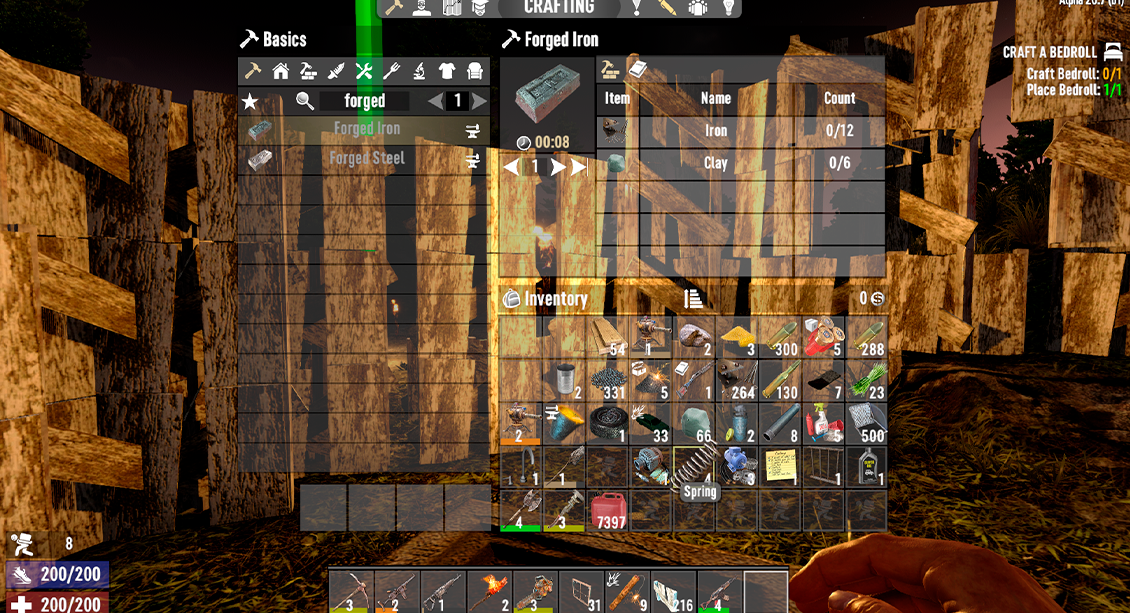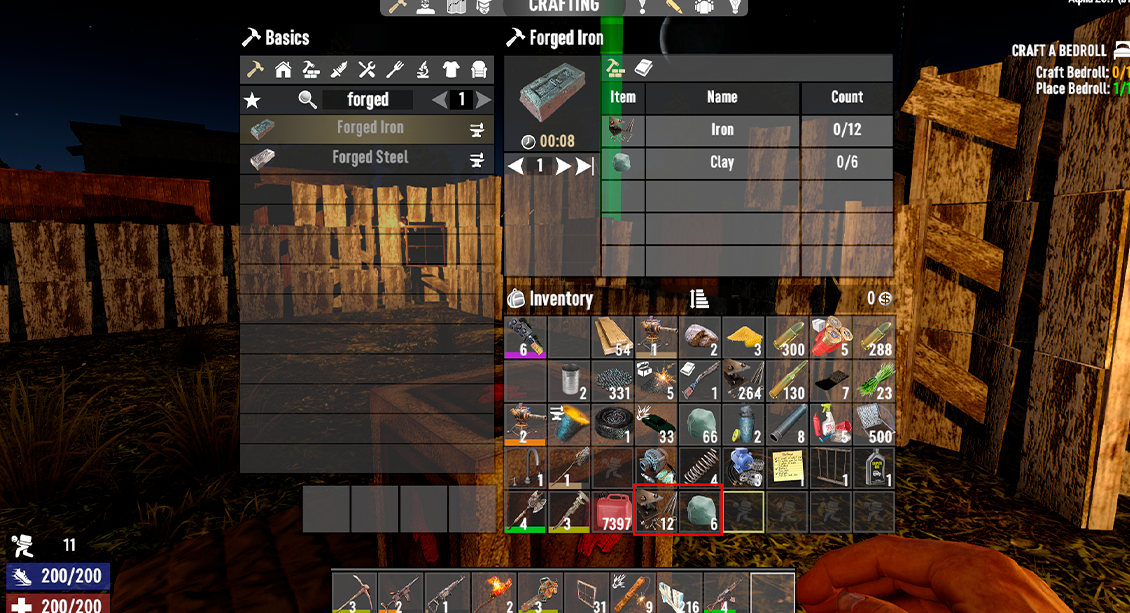How to Make Forged Iron in 7 Days to Die

Make Your Own game Server
So, look no further because you are at just the right site to read about how to make forged iron in this popular survival game, "7 Days to Die." We are going to describe in quite a lot of detail how you can forge this iron, depending on the search queries provided. Keep in mind, that across versions of the game, there might be some requirements and recipes to forge iron that can be different.
Anyway, don’t forget to set up your 7 Days to Die Server. Continue reading when you’ve already done that!
The Art of Crafting Forged Iron
To be more precise, by wanting to make a forged iron, you'll need: a source of fire, something to burn, and the iron. To do a forged iron, just do the steps below:- First off, add your wood or coal fuel to the fuel compartment of the forge. It is the fuel that is going to be used to fire up the smelting process. It's fuel for the forge.
- Add iron and clay soil: To the right of the smelting area of the forge, add the soil of both iron and clay in equal proportion to the added number of small stones. Iron and clay will yield forged iron as soon as they are mixed.
- Smelting Delay: After the period of the sinking of the iron and clay soil has elapsed into the pot, waiting for delays should be allowed until the blowing in of the ingredients. Just as in smelter previously does occur for this matter; waiting on the miracle operation of the forge.
- Handmade Forged Iron: can be manually crafted by initiating the iron smelting process, and on that completion, the resources can be utilized in many diversified crafting recipes and building tasks.

Smelting scrap items
In 7 Days to Die, there's a simple way you can get the stuff; rather than smelting by yourself, you can obtain Forged Iron right from the items you are smelting at the Forge. You can get the creation of Forged Iron from smelting the following:- Springs
- Pipes
- Nails
- Empty cans
- Old weapons
- Armor
- Mods
Smelting them in the forge itself, as opposed to straight-up scrapping, yields a lot of extra iron. It opens up another way to get more forged iron and helps put to use resources that you might come into possession of within the game.

The Crafting Cost
In 7 Days to Die, there is a particular cost involved in creating forged iron. You will require the following to generate one forged iron: - 12 units of Scrap Iron
- 6 units of clay
Be it as it may, make sure to have these resources: you will be able to optimally output and walk further in the game by resourceful management of the resources.

Can I use any kind of fuel in the Forge?
Yes, the Forge in 7 Days to Die can run a pretty wide gamut of different fuel sources: from combustible to strictly non-flammable. Examples of fuel sources for the Forge that are part of the combustible type and definitely accepted are the common ones, like your solid fuel. Simple wood, coal, oil shale, and other sources of usable fuels can be used in BoS, depending on the version of the game.
How long does it take for the iron and clay to smelt into forged iron?
In 7 Days to Die, smelting is going to be quite the time-consuming affair. So, you are going to be sitting there while your iron and the clay soil smelt into forged iron after putting them in the smelting area of the Forge. It might differ discretionally a little bit due to game settings, but usually, the smelting process gets completed in 10-15 minutes.
Are there any other options besides crafting and smelting to produce forged iron?
Besides using the Forge or smelting raw materials, other venues for getting Forged Iron in the game come in as loot. It normally takes the shape of scavenging for Forged Iron contained within loot items, maybe safes or toolboxes, or even if it is a certain location such as building sites. Forged Iron can also be gotten through bartering with in-game merchants and sometimes as a contribution for completed quests.
Can I scrap items to get forged iron instead of smelting them?
For items that can be scrapped into resources later, in 7 Days to Die, you will be able to scrap some items to get those resources, but smelting often increases the efficiency when it comes to getting forged iron. The process of melting things like springs, pipes, nails, or even mods on and in worn out and empty cans, armor, and other material in the forge, will produce more iron than just scraping them off would. If you are smelting to up your production of forged iron, then it might also be smart to prioritize making these your first for melt.
How much forged iron can I anticipate to obtain from smelting materials?
The Forge will be able to provide you with various numbers of Forged Iron, according to what you are smelting. Different items produce different numbers of Forged Iron. For example, a spring will melt down to 10 Forged Iron here, while an old weapon may melt down to 20 Forged Iron. Test different goods to learn your most profitable sources of resources and write down their yields.
Can I reuse or recycle forged iron from products I no longer need?
Because 7 Days to Die supports creativity, any item once it is crafted or acquired in its item form, can't be unmade back into the state of raw material, forged into iron, or other items. Unwanted items which have no use in your further game can be sold to vendors for in-game money or scrapped to be broken down to other resources.
Are there any benefits or abilities that could increase the amount of forged iron I produce?
Because 7 Days to Die supports creativity, any item once it is crafted or acquired in its item form, can't be unmade back into the state of raw material, forged into iron, or other items. Unwanted items which have no use in your further game can be sold to vendors for in-game money or scrapped to be broken down to other resources.
Conclusion
Iron Forging captures a vital area of survival and, of course, progression in 7 Days to Die. On point, all it has to be said is that you can craft it through a Forge, the Iron source, along with any type of combustible fuel. There is also another way to gain Forged Iron, and that's by developing some material in the Forge.One thing you should always keep in mind is that currently available data on a forge guide to making forged iron in "7 Days to Die" will effortlessly come through official guides and community sources to a player, who is a long ways in acquiring it. With such information in hand, you are now ready to face the challenges put in place at competitive survival in the post-apocalyptic environment.
Make Your Own game Server
Copyright 2019-2026 © ScalaCube - All Rights Reserved.